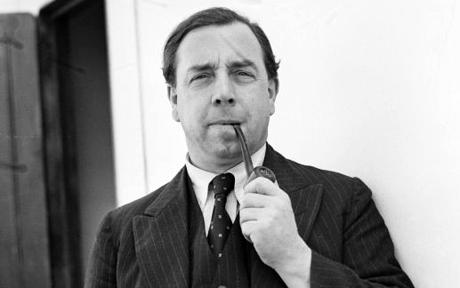A few words about BLT’s 2013 production of
‘An Inspector Calls’ from a lighting point of view. This is not a new play for me, having studied
it myself whilst at school (a while ago now!) and having also lit the 2006
production.
The actual design process for me will start towards
the back end of the rehearsal process; by this point the majority of the
blocking is done (The process where the
Director will move the actors around the set).
To begin I will attend rehearsals and just
sit there watching the actors and the positions they assume and how they move
around the stage. I will look at the key acting areas - for example in this
production you will notice that a lot of the lines are spoken ‘front on’
straight out to the fourth wall, which impacts on how I light those parts of
the stage. As I attend more and more rehearsals I start to build a picture of
how the final lighting design will look.
I am very used to working with Neil in his
capacity as Director; we understand each other and often don’t have to talk to
each other about certain things. He is normally sat at my side operating sound
for his productions (he hates watching his own plays and prefers to have
something to do!!) Neil will have his
own ideas on the look and feel of the play and then I’ll add my bits in and we
arrive at the overall design for the show, although the bulk of decisions will
be made in good time the best ideas often come at the eleventh hour!
It’s not very often that I (or any
other Technician for that matter) will follow the stage directions when
lighting a play but with ‘An Inspector Calls’ that’s exactly what I’m going to
do. In the text Priestly calls for “The lighting should be pink and
intimate until the Inspector arrives, and then it should be brighter and
harder.” This is a fairly broad description but
is essentially what is needed in this play and is achieved fairly easily by
having two contrasting general lighting states, which is what we have in this production. The first state is a warm wheat coloured wash
and the second a colder more neutral wash which is used following the
Inspectors entrance.
In this production of ‘An Inspector Calls’
Neil has decided to adopt a Brechtian approach which I hope will also translate
to the final lighting design. The lighting is very much ‘in vision’ throughout
with bits of rigging etc obvious from the auditorium. The pointing /
highlighting of certain scenes and passages will see an obvious change in
lighting state. As I mentioned earlier, colour will play an important part of the
lighting design with a mixture of conventional tungsten lanterns and more
modern LED fixtures being used to create the overall lighting design.
I will
be making use of side lighting from boom stands and lighting from very severe
low and high angles. These methods of lighting are not always comfortable for
an audience to look at as they create shadows and hotspots on the faces of
actors. Those of you who are familiar with the text will see where I am going
with this...
I
hope you enjoy the production and come a little bit closer to understanding
“Who Killed Eva Smith ?”
Aneurin Brown...








